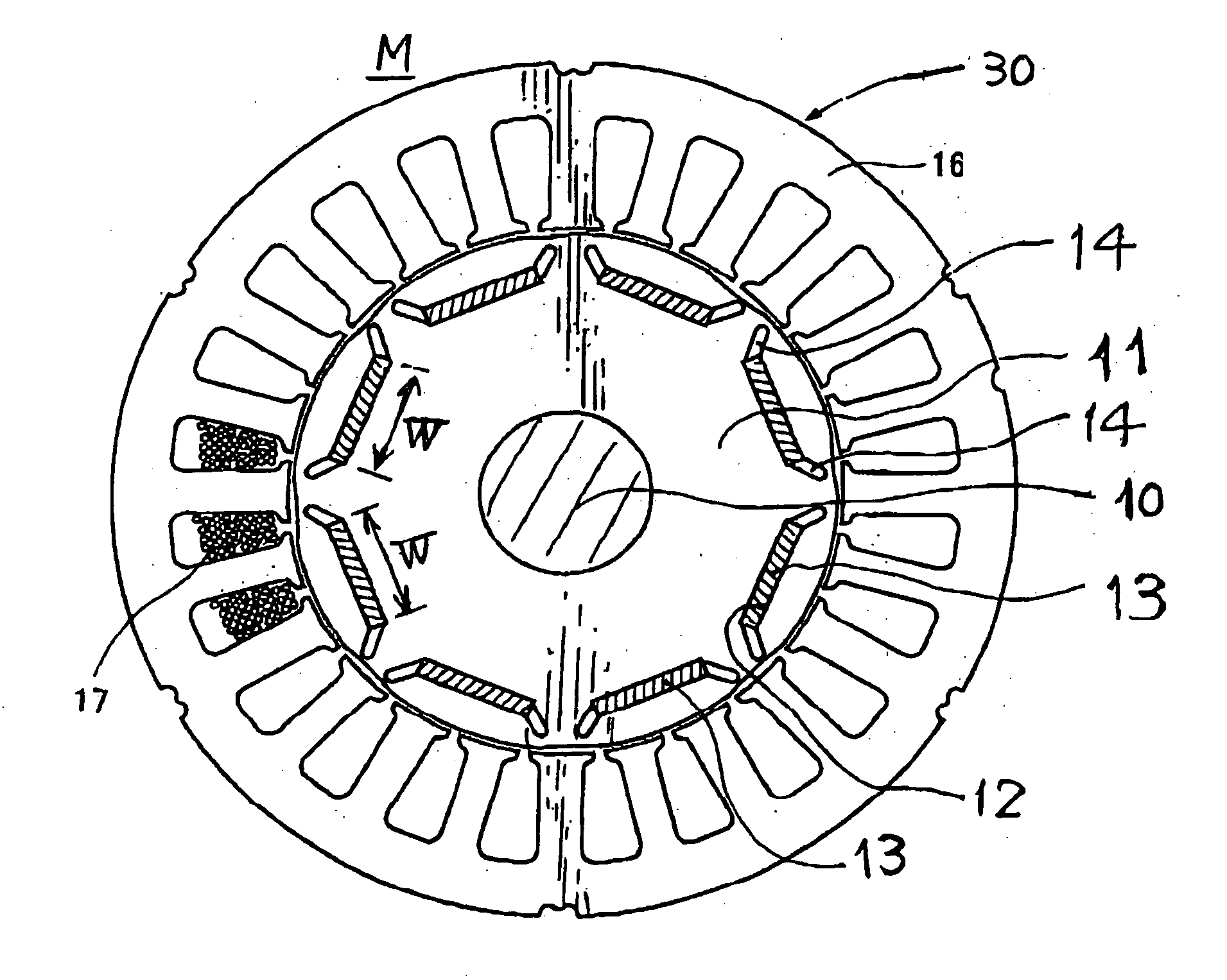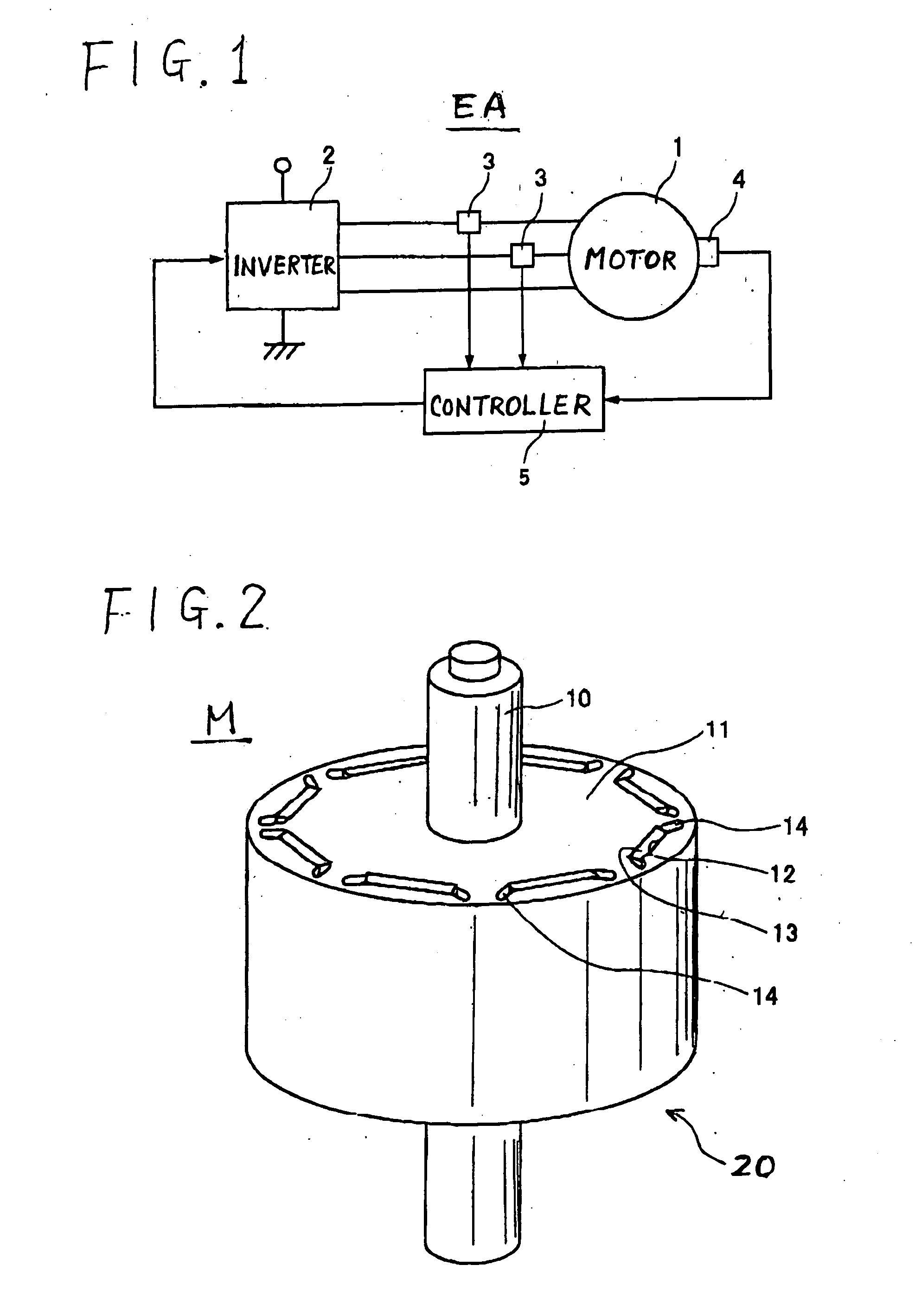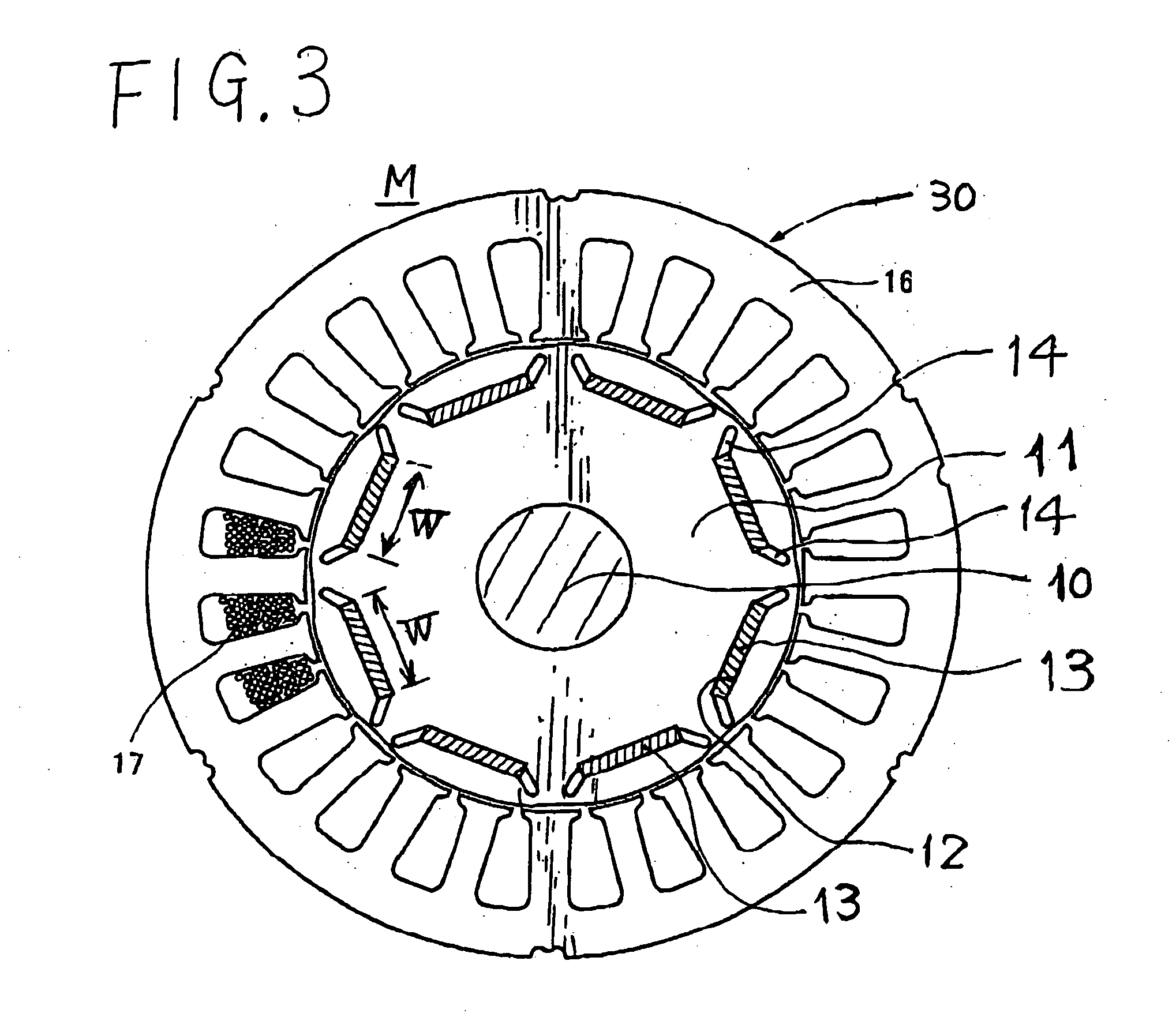Rotary electric apparatus with skew arrangement
a rotary electric and skew arrangement technology, applied in the direction of magnetic circuit rotating parts, magnetic circuit shape/form/construction, stator/rotor body manufacturing, etc., can solve the problem that the conventional skew arrangement structure is insufficient for cancelling the torque harmonic components, and achieve the effect of suppressing the reduction of effective torqu
- Summary
- Abstract
- Description
- Claims
- Application Information
AI Technical Summary
Benefits of technology
Problems solved by technology
Method used
Image
Examples
first embodiment
[0038] Referring to FIGS. 1 to 4, a first embodiment of the rotary electric apparatus according to the present invention will now be described.
[0039]FIG. 1 schematically outlines the electrical configuration of an electric apparatus EA in which a synchronous machine 1 serving as the rotary electric apparatus according to the present invention is incorporated. In the present invention, the synchronous machine 1 is of a magnetic rotor (usually called “IPM (Interior Permanent Magnet)” type of machine and, by way of example, is composed of a brushless DC (direct current) motor of IPM type, but this is not a definitive list.
[0040] This electronic apparatus EA is provided with, in addition to the IPM type of synchronous machine 1, an inverter 2, current sensors 3, a rotation angle sensor 4, and a controller 5. The elements 2-5 constitute the armature current controller for the synchronous machine 1.
[0041] The inverter 2 is in charge of converting DC (direct current) power, which is sup...
first modification
[0059] A first modification relates to the order of a harmonic component of torque caused between the rotor and stator member. This order will not be confined to the sixth order, but any other orders are to be targeted for the cancellation of their harmonic components.
second modification
[0060] A second modification is depicted in FIG. 5. In this modification, the rotor 20 is formed by, for example, three groups of segments 20a, 20b and 20c, in which each segment group 20a (20b, 20c) is composed of the first member pair “F” consisting of the first rotor member 21 and the first stator member 31 and the second member pair “S” consisting of the second rotor member 22 and the second stator member 32. Each of the members 21, 22, 31 and 32 is identical to that described in FIG. 4(A). These three groups of segments 20a, 20b and 20c are mounted on the rotation shaft 10 in the axial direction thereof in a mutually juxtaposed manner.
[0061] This manner of arrangement is effective in reducing variations of torque (i.e., unbalance of torque) generated between each rotor / stator member pair disposed along the axial direction of the rotation shaft 10, because the first and second rotor members 21 and 22, which produce mutually different amounts of torque with the aid of the first ...
PUM
 Login to View More
Login to View More Abstract
Description
Claims
Application Information
 Login to View More
Login to View More - R&D
- Intellectual Property
- Life Sciences
- Materials
- Tech Scout
- Unparalleled Data Quality
- Higher Quality Content
- 60% Fewer Hallucinations
Browse by: Latest US Patents, China's latest patents, Technical Efficacy Thesaurus, Application Domain, Technology Topic, Popular Technical Reports.
© 2025 PatSnap. All rights reserved.Legal|Privacy policy|Modern Slavery Act Transparency Statement|Sitemap|About US| Contact US: help@patsnap.com



